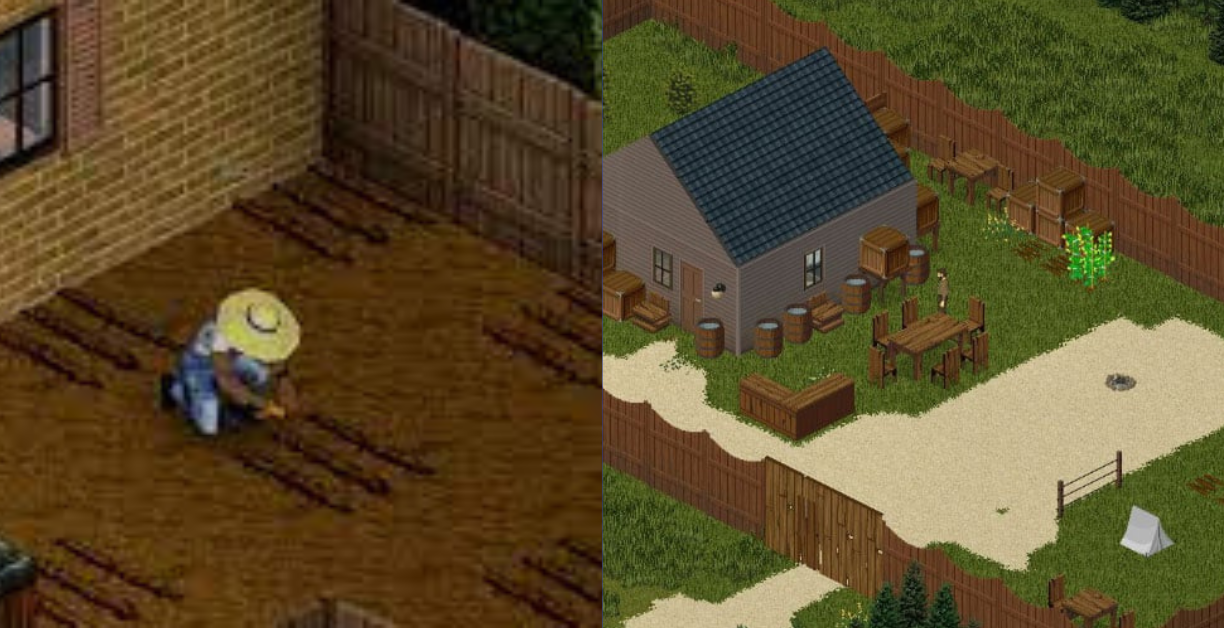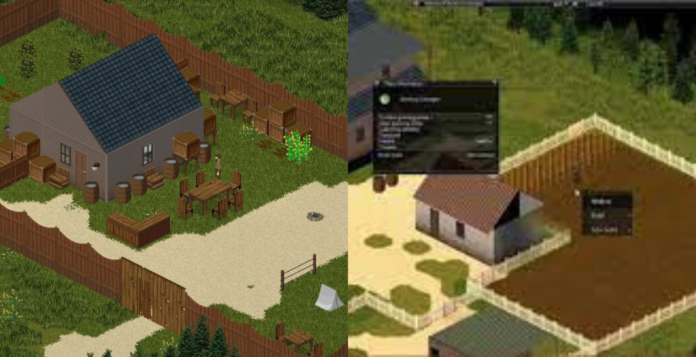A lot of reader of our databeescience want to know project zomboid how to farm. Farming for survival simulation is a great way to secure a steady supply of food and calories throughout the game. Here’s a basic guide to get you started:
Project Zomboid how to farm
Find Seeds: Look for packets of seeds in houses, sheds, or other buildings. You can also find them by foraging.
Tools: You’ll need a shovel or trowel to prepare the soil, a watering can to hydrate your crops, and seeds to plant. You can find these tools and seeds through scavenging or looting agricultural buildings.
Preparing the Soil: Locate a suitable area for your farm and use your shovel or trowel to till the land. This will prep the soil for planting.
Planting Seeds: Once the soil is tilled, you can right-click on it and select “Sow Seed” to plant your seeds. Different crops have varying water requirements, so be sure to take note of that.
Watering: Use your watering can to keep your crops hydrated. You can check the info panel of your crops to see their current water level. Overwatering can lead to root rot, so be mindful of how much water you use.
Fertilizing (Optional): Compost can be used to fertilize your crops, speeding up their growth and improving their yield. You can create compost by placing compost bins in your base and adding organic materials like rotten fruits and vegetables.
Maintenance: Keep an eye on your crops for signs of disease or pests. Mildew spray can be crafted to treat mildew, while rotten crops will need to be uprooted to prevent the spread of disease.
Here are some additional tips for successful farming in Project Zomboid:
Choose a Safe Location: Ideally, your farm should be situated in a secure area away from roaming hordes of zombies.
Fencing: Consider building fences or walls around your farm to deter zombies and protect your crops.
Rooftop Farming: You can even create farms on rooftops by collecting sacks of dirt and placing them on suitable surfaces. This can be a great space-saving option.
Seed Saving: When harvesting crops, you can right-click on them and select “Extract Seeds” to save seeds for future planting.

Read more
how to make berry jam fae farm
internships in aerospace engineering -Summer 2024 Intern
how many engineers does it take to change a lightbulb
Farming in Project Zomboid is a crucial survival skill, offering a renewable source of food amidst the post-apocalyptic chaos. To clarify survival simulation how to farm embark on your agricultural journey, the first step is to scavenge for seeds. You can find them scattered in abandoned houses, gardens, or potentially even in the ruins of hardware stores. Alternatively, foraging in the wilderness might yield wild seeds, expanding your crop variety.
Once armed with seeds, the next task is soil preparation. Clearing an area of debris or grass is essential to create space for your crops. Using tools like spades or hoes, till the soil to aerate it and remove any obstacles. Enhancing soil quality with fertilizers such as compost or manure can significantly boost crop yields.
With the soil ready, carefully plant the seeds at appropriate intervals, ensuring each plant has sufficient space to grow. Be mindful of crop spacing to optimize growth and avoid overcrowding. Regular watering is paramount to keep the soil moist and facilitate germination. Utilize watering cans or collect rainwater in barrels for a sustainable water supply.
Throughout the farming process, diligent maintenance is vital. Keep an eye out for pests and diseases that can decimate your crops. Employ pesticides or manually remove infested plants to safeguard your harvest. Additionally, monitor weather conditions, as extreme temperatures or rainfall patterns can impact crop health.
As your crops mature, it’s time for the rewarding task of harvesting. Equip yourself with suitable tools like kitchen knives or scissors to efficiently gather the fruits of your labor. Once harvested, consider saving some seeds for future planting to ensure a continuous food supply.
Farming in Project Zomboid is a dynamic endeavor, influenced by factors like seasonality and environmental conditions. Now you know clearly survival simulation how to farm. Adapting to these challenges and mastering the art of agriculture is essential for long-term survival in the unforgiving world of Zomboid Game.
Zomboid Game how to farm
Farming in Project Zomboid is a great way to secure a steady supply of food, but it takes work and planning. Here’s a deeper dive into project zomboid how to farm or farming in Zomboid Game, turning you into a post-apocalyptic green thumb:
Location
Ground Floor Farming: This is the traditional method. Look for open areas near houses with fences or walls for extra protection. Make sure there’s enough sunlight for your crops to thrive.
Rooftop Farming: Short on ground space? Rooftops are viable alternatives. However, you’ll need to build raised garden beds using sacks filled with dirt. This requires more effort but offers better security compared to ground floor plots.
Tools for the Dedicated Farmer:
Shovel: A must-have for raised beds. You can scoop dirt from piles or pre-existing gardens to fill your sacks.
Sacks: These aren’t just for carrying loot. Use them to transport dirt for raised beds or even store extra seeds.
Watering Can: Craft one or find one in a house. A watering can with a large capacity saves you trips to refill. Consider using rain barrels to collect rainwater for watering, especially early on.
Compost Bin: While not essential for planting, a compost bin is a great way to turn rotten vegetables into fertilizer, boosting your crop growth. You’ll need Carpentry Level 2 to build one.
Planting Strategies for Success:
Seed Selection: For beginners, focus on crops like potatoes and cabbages. They’re easy to grow and provide a good yield.
Crop Rotation: Planting the same crop repeatedly in the same spot depletes nutrients. Rotate your crops between different types to maintain soil health and prevent disease.
Spacing is Key: Don’t crowd your crops! Planting them too close together hinders growth and increases the risk of disease spreading. Refer to the plant info (right-click on tilled soil) for recommended spacing.
Seeding for the Future: When harvesting, consider leaving a few mature plants unharvested. These will eventually turn into seed-bearing plants, allowing you to collect free seeds for future plantings.
Taking Care of Your Plant Children:
Watering Woes: Overwatering is a rookie mistake. Use the watering can and check the plant info for moisture levels. Aim for “well-watered” status. Rain helps, but don’t rely solely on it.
Fertilizing Frenzy: Fertilizer speeds up growth, but be careful! Overuse can kill your plants. Use it strategically, perhaps on a few select crops for quicker harvests.
Disease Defense: Wilting or discolored leaves indicate a sick plant. You can find bleach and other disinfectants to treat some diseases, but prevention is better. Keep your crops well-watered and maintain proper spacing.
Bonus Tips for the Discerning Farmer:
Foraging for Seeds: Early on, consider foraging in areas near farms. You might find wild vegetables that yield seeds, giving you a head start on your agricultural endeavors.
Winter Woes: Some crops won’t survive the cold. Plan your winter crops accordingly, or consider using greenhouses (a higher-level project) to extend your growing season.
Food Preservation: A full belly is a happy belly, but you don’t want your harvest to spoil. Invest in freezers or learn how to preserve food through canning or drying to make your crops last longer.
With dedication and these tips, you’ll be a master farmer in no time, keeping yourself well-fed and surviving the Knox County zombie apocalypse in style. Remember, a full stomach means more energy to fight off the undead hordes!

Does day length affect hunger in Project Zomboid?
The length of the day in Project Zomboid can affect how frequently your character gets hungry. Here’s how it works:
Day Length and Hunger Rate
Day Length Settings:
Zomboid Game allows players to adjust the length of a day in the game settings. This setting determines how long it takes for a full day-night cycle to complete in real-time.
Hunger Mechanics:
Hunger in Zomboid Game is tied to in-game time. Your character gets hungry over time, and this rate is relatively consistent regardless of the day length setting.
If the day length is shorter, hunger will appear to increase more quickly in real-time because the in-game time is passing faster. Conversely, with a longer day length, hunger will appear to increase more slowly in real-time because the in-game time is passing more slowly.
•Practical Implications
Shorter Days: With shorter day settings, you will need to eat more frequently in real-time. This can make the game feel more intense and fast-paced.
Longer Days: With longer day settings, you will need to eat less frequently in real-time. This can make the game feel more relaxed and give you more time to accomplish tasks each day.
•Tips for Managing Hunger
Keep Food Handy: Always carry some food with you, especially if you are exploring or fighting zombies.
Cook Meals: Cooking can provide better nutrition and keep you fuller for longer.
Grow Your Own Food: As mentioned in the farming guide, having a steady supply of home-grown food can be crucial for long-term survival.
Adjusting the day length can significantly change the pacing and feel of the game, so choose a setting that matches your preferred play style.
Adjusting the day length in Project Zomboid impacts how frequently your character experiences hunger, tying the rate of hunger to the passage of in-game time. Shorter days result in more frequent hunger in real-time, creating a fast-paced and intense gameplay experience. Conversely, longer days slow down the rate of hunger in real-time, offering a more relaxed pace and ample time for daily tasks.
To manage hunger effectively, ensure you always have food on hand, cook meals for better nutrition, and consider farming to secure a steady food supply. Balancing day length settings with your play style will enhance your survival experience in the post-apocalyptic world of Project Zomboid.















